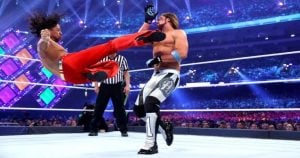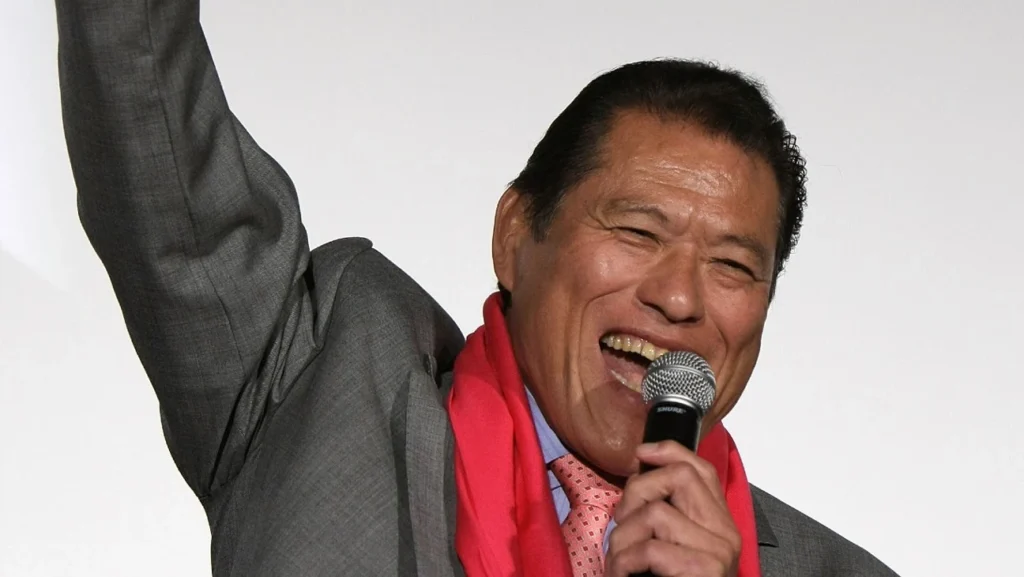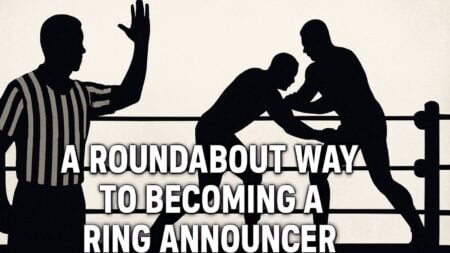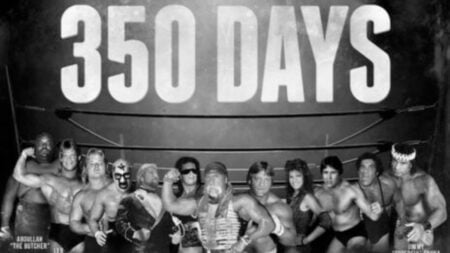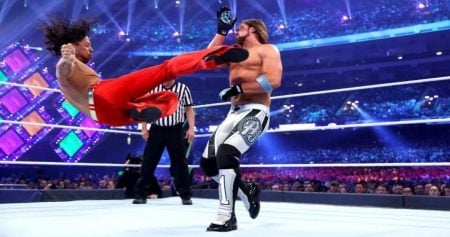On October 1st, 2022, NJPW founder Kanji “Antonio” Inoki passed away at 79 years old. He had been in poor health for many years and had recently been diagnosed with cardiac amyloidosis.
And with his passing, we would like to look back at the legacy Inoki leaves behind. Because few people in wrestling’s long history come close to achieving the same heights as him.
Antonio Inoki – A handpicked superstar
Kanji Inoki didn’t come to wrestling; wrestling came to him. Inoki was scouted by none other than Rikidozan himself when Inoki was living in Brazil.
Rikidozan was so impressed with Inoki’s natural athleticism that he invited the then-17-year-old to train with him and become his protégé.
Inoki did just that and joined the Japanese Wrestling Alliance (JWA). It was there that he met his future tag partner and later future business archrival Shohei “Giant” Baba.
It was also there that Inoki received formal wrestling training, which included lessons from Karl Gotch, a grappler so revered he was nicknamed “Kami-sama (神様)”, literally, ‘God’.
Inoki took these lessons and soon became a major star in Japan. He teamed with Baba and also traveled all over the world. During his early years, Inoki wrestled some of the best wrestlers alive at the time.
These included: Freddie Blassie, Harley Race, Dory Funk, Jr., The Destroyer, Gene Kiniski, and Lou Thesz. He was rubbing shoulders with the best pro-wrestling had to offer and was being groomed for success.
But fate had other plans.

Death and war
Inoki’s career stalled somewhat following Rikidozan’s murder in 1963. Rikodozan was a national hero, an icon, and a source of pride in a country long suffering from melancholy following World War II.
With his death, puroresu’s future remained in doubt. Inoki tried to salvage the JWA as best he could but to no avail.
So when his plans for a hostile takeover fell through, he was fired. But he took that fate on the chin and decided, “screw you, I’ll make my own wrestling company”. Which he did.
On March 6th, 1972, New Japan Pro-Wrestling had its first show main-evented by Inoki vs. Thesz. Months later in October, the JWA dissolved and its remnants folded into Baba’s new company, All-Japan Pro-Wrestling.
“The rivalry between the two major pro wrestling companies in Japan – New Japan, headlined by Antonio Inoki, and Giant Baba’s All Japan – was fierce.
They timed their TV and house shows to compete with each other, and with both promoters in starring roles as top babyfaces, they contracted monster heels from around the world at unprecedented salaries.
I never met a classier wrestler than Antonio Inoki. He was a legitimate tough guy, respected by fans and wrestlers alike.”
– Bret Hart, Hitman: My Real Life in the Cartoon World of Wrestling, page 89
For the next fifty years – and do this very day – New Japan and All Japan have remained steady rivals. Inoki built NJPW around himself and contracted top stars from elsewhere to come and face him.
He had high-profile and main-event feuds with the likes of Hulk Hogan, André the Giant, Bob Backlund, and many others.
Some of the legends from his formative years wrestled him once he was a main-eventer, including Gotch/”God” himself. All throughout the 1970s and into the 1980s, Inoki was a star.
He made a fortune as a wrestler and as a promoter. New Japan enjoyed immense critical and commercial success. And he even managed to revolutionize the industry with the style he booked.

The Birth of Strong Style
Realism was everything to Inoki. He wanted the whole world to believe that he and his wrestlers were the toughest sportsmen alive. This was especially challenging given that Japan was filled with combats sports practitioners.
Experts in karate, judo, kickboxing, and other disciplines all tried to expose wrestlers as phonies and pretenders. To stop this, Inoki trained his pupils and co-workers in Strong Style.
Basically, Strong Style is pro-wrestling + martial arts + submission holds. NJPW wrestlers were (and still are) expected to have some fundamental understanding of some grappling skill.
These skills are combined with very real martial arts strikes and submission holds. That way, should an outsider try his luck and challenge a NJPW wrestler, he’d find himself in a real fight against wrestlers trained in very real disciplines.
And when translated into the squared circle, Strong Style created an exciting, fast-paced match formula. Amateur exchanges and technical holds were found all over the match. Strikes were hit quickly and with plenty of force.
Submission holds were often used to end matches because they were often applied as close to full power as possible.
It wasn’t uncommon to see almost every NJPW wrestler have a “main” finisher but also use something like a cross armbreaker or a heel hook out of nowhere to win.
Inoki used this approach for decades as New Japan’s top star. He wrestled in the biggest matches and carried the company on his back through a long boom period. But that boom period also had some busts as well.
Inoki, like many wrestling promoters, was also a bulls**tter. He liked to talk a big game and make promises he couldn’t keep. One of those was, and still is, one of the most talked about failures in combat sports history: Inoki vs. Muhammad Ali from June 26th, 1976.
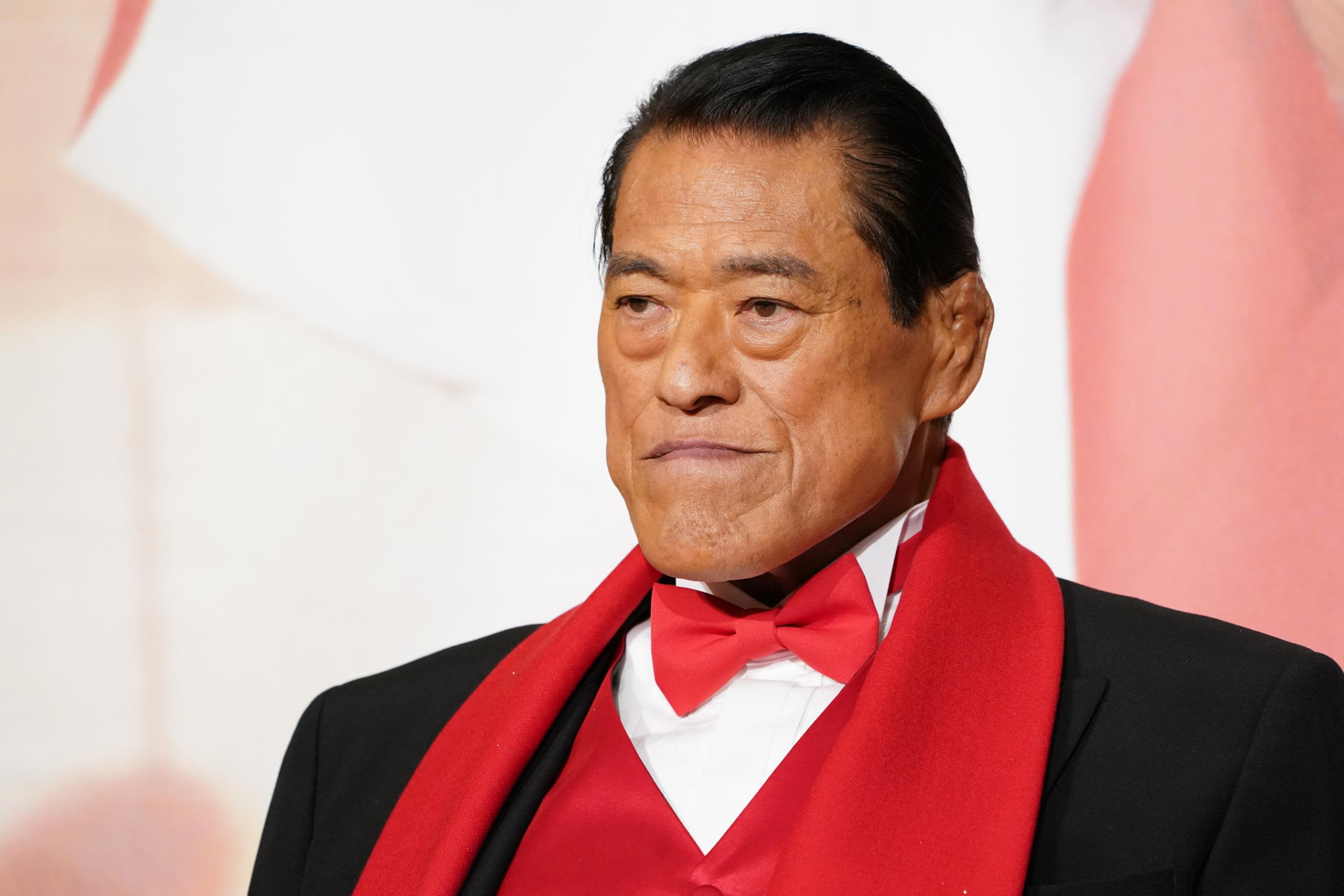
An Unmitigated Disaster
In 1976, Inoki managed to court Muhammad Ali to face him in a New Japan ring. However, this became one of wrestling’s and Inoki’s biggest blunders because of how it was executed. Inoki’s approach to wrestling was to keep it changing constantly.
He wanted to combine different styles together to create something new, like a chef or a mixologist combining different tastes. Inoki thought that a wrestler and a boxer could have a big match together, and he hyped it up as a truly massive event.
But once Inoki and Ali got in the ring, it turned into a disaster.
Due to promotional differences and a complete styles clash, Inoki couldn’t actually wrestle Ali. He couldn’t go for take-downs, apply his submission holds, or even use his patented enzuigiri finisher.
A last-minute change in the match contract forbade Inoki from using his hands in any way. So Inoki was forced to use only his legs…from his back.
So instead of seeing a true ‘different styles fight’, fans tuned in to see…Inoki kicking at Ali’s shins while on his back. And Ali didn’t do anything either; as he put it, “why would I need to fight an opponent who’s already on the ground?”
As if that wasn’t enough of an embarrassment, there’s this iconic Inoki “match”. But while Inoki vs. Ali was embarrassing, this one was embarrassing and hilarious. Because laughter is the best medicine and sometimes one needs something funny to lift up their spirits.

Inoki, The Booker and Promoter
Once his in-ring career started slowing down, Inoki focused more on training and business. He had a direct role in training many wrestlers who’d go on to have storied careers.
These include; The Three Musketeers (Chono, Muto/Muta, and Hashimoto), the first Tiger Mask, Riki Choshu, Shinsuke Nakamura, and Rocky Romero.
He also put revolutionary thinking at the forefront of his wrestler’s mindsets. For Inoki, it was better to do something new than something established. That’s why New Japan became the hotbed of new wrestling starting in the 80s.
Tiger Mask was his revolutionary junior heavyweight and his matches with Dynamite Kid were so ahead of their time that they caused countless wrestlers to follow in their footsteps.
In fact, the April 21st, 1983 match between Tiger and Dynamite was the first-ever WON 5-Star match.
As the years progressed, Inoki gave plenty of attention to these smaller wrestlers. Junior heavyweights flourished in New Japan, and the company developed an international reputation.
The most technical and agile wrestlers all wanted to work for New Japan, even if only for a short time.
Inoki’s promotion led to the international recognition of such stars as Jushin Liger, Wild Pegasus, Black Tiger II (Eddy Guerrero), Ultimó Dragon, and many more.
He even granted these smaller wrestlers their own show: the 1994 Super J Cup, which was once considered the single-greatest one-night wrestling show of all time.
But as great as that division was, Inoki had even more success elsewhere.
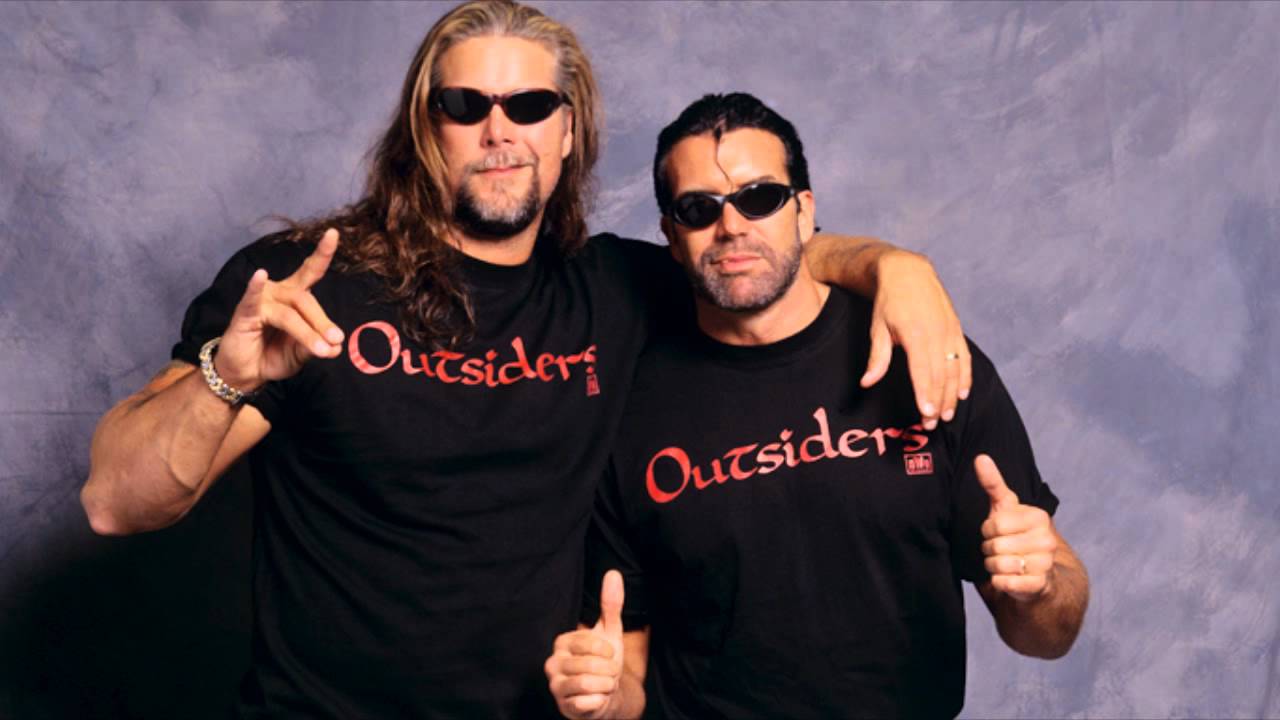
The Outside Invaders Concept
Inoki and New Japan are falsely considered to have innovated the outside invaders booking concept. In truth, the idea was first used by rival All Japan in the 1980s. But once AJPW went all “walled garden” in the 90s, Inoki took their idea and expanded on it.
Inoki capitalized on the growing shootfighting/MMA scene that was growing in Japan and had both a lightbulb over his head and Yen signs in his eyes. These outside fighters, Inoki thought, would be the perfect opponents for his top NJPW heavyweight stars.
And thus, the NJPW/UWFi feud was born. The outsiders, leg by Nobuhiko Takada, invaded NJPW with the goal of destroying it from within. They “reach their goal” in a way when Takada captured the IWGP Heavyweight Championship, the company’s top prize.
But this was only temporary as NJPW ace Shinya Hashimoto reclaimed it from Takada in April 1996 to save the company. Not only did he do that, but he and Takada also set a record.
Their 1996 Tokyo Dome match brought in almost $US 6 million, which was the largest gate at the time. And this was without widespread TV coverage or without any PPV business.
And if this story seems familiar, that’s because it is. Eric Bischoff took this exact story concept and used it with the Outsiders/New World Order in 1996, albeit with some minor twists.
And just as that storyline changed the complexion of the Monday Night Wars, so too did Inoki’s war with the UWFi.
But like the NWO angle, Inoki’s follow-up also lost steam and ended in disaster.
Going Too Far In One Direction
As a promoter, Inoki didn’t know when to stop with his obsession with “real pro-wrestling”. After NJPW’s peak with the UWFi angle, he didn’t know where to go from there.
Then he found a potential protégé in Olympic judoka Naoya Ogawa. He groomed Ogawa and vowed to make him his next big star.
But there was a roadblock in his plan: Hashimoto was NJPW’s ace and most popular star by far. And though he was a hard-hitting striker, Hashimoto lacked the same level of credibility as Ogawa.
Thus Inoki was left with a dilemma. Ogawa represents NJPW’s future (in Inoki’s eyes), but Hashimoto’s still white-hot in the present. So what did Inoki do?
He booked a shoot.
Though the exact details will never be fully known, but the general consensus is that Inoki ordered Ogawa to beat Hashimoto up for real. Whether Hashimoto was aware of this or not is still up for debate.
But what isn’t is that Ogawa thrashed Hashimoto so badly that he destroyed Hashimoto’s reputation in a single night.
As a comparison, imagine if at WrestleMania 38, Gable Steveson made his debut and beat the tar out of Roman Reigns and exposed him as a fake tough guy. That’s basically what happened to Hashimoto.
The Dawn of Inokism and New Japan’s Gradual Decline
With that fateful event, Inoki began a booking philosophy that would see New Japan knocked off its pillar. Inoki booked his wrestlers to fight in MMA bouts and had MMA fighters wrestle his wrestlers.
Both cases ended poorly, more often than not. This emphasis on realism caused fans to leave New Japan in droves.
In one case, at Wrestling World 2001, fans were so incensed at a ‘shoot-style’ ending of a match between Choshu and Hashimoto that they pelted the ring with garbage.
And not intentionally, as they had done in the past with Atsushi Onita, but out of genuine anger. And this was a crowd of Japanese fans.
The same people who tend to get positive media coverage for cleaning up after themselves at international venues and being the perfect guests for any event. This was the animus fans had towards Inoki and his booking.
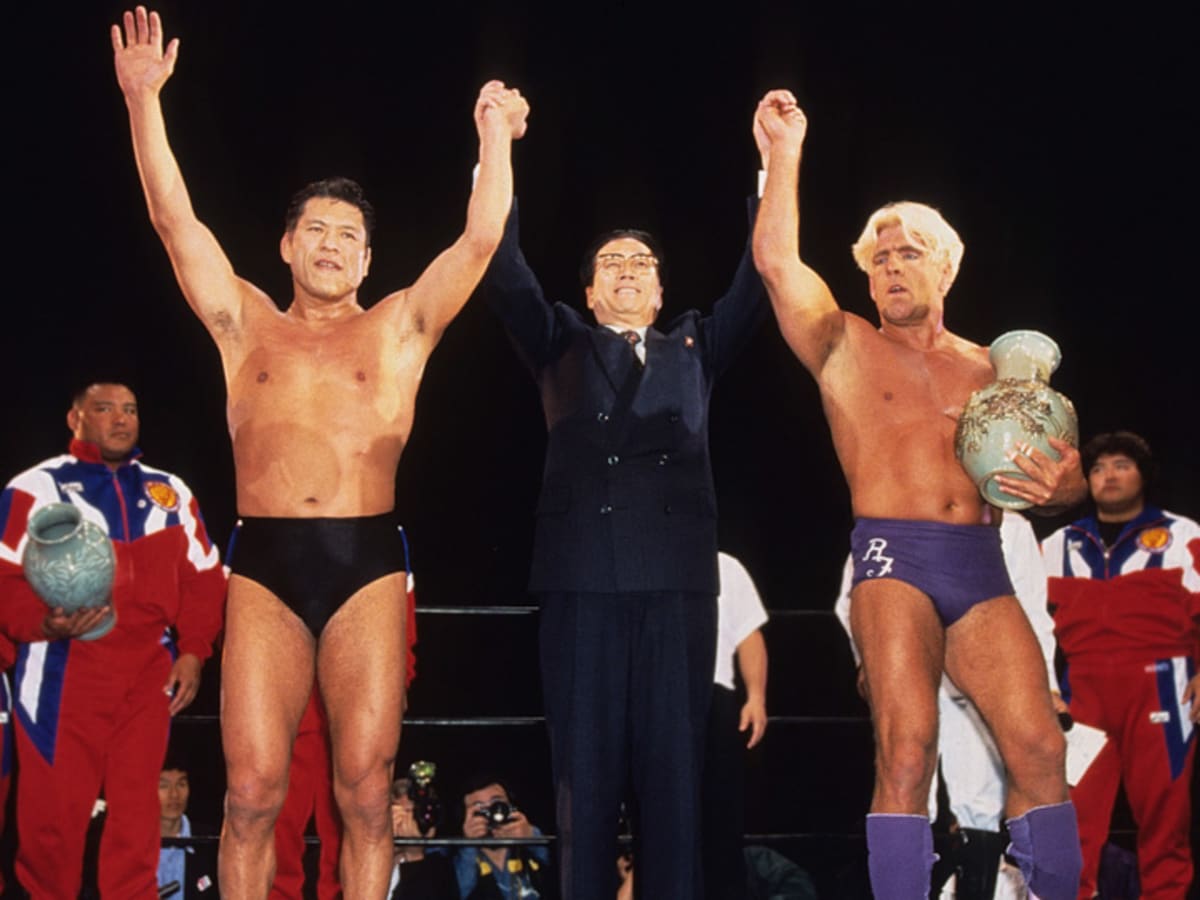
Departure and Other Ventures
Inoki continued with his wrestling/MMA hybrid booking for years without end. As the 90s turned into the 2000s, some wrestlers started turning their backs on him. Both Hashimoto and Muto left New Japan, and Chono became a semi-regular wrestler.
The junior heavyweight division languished and was largely uninspiring unless NJPW’s wrestlers wrestled elsewhere (such as Liger in NOAH).
Inoki tried to bring in high-profile “figures” like Chyna and Bob Sapp. But the buzz over their appearances didn’t translate into long-term financial success.
Things got so bad by 2004-2005 that people thought New Japan was going to shut down. With no other choice, video game company Yukes bought Inoki’s majority share in New Japan.
With that, Inoki was ousted from the very company he founded. His final moment in his own company was one of despair as opposed to one of joy.
But at least he had other ventures. Inoki managed to retain a degree of intrigue following his political career. He’s the first wrestler to ever enter politics and achieved a modicum of success in that regard.
He developed a strangely warm relationship with North Korea, which came from his status as Rikodozan’s pupil.
That relationship allowed him to book a NJPW/WCW show in Pyongyang called Collision in Korea. That show included an alleged second-night attendance of 190,000 and included the one and only singles match between Inoki and Ric Flair.
Inoki also had one last hurrah in wrestling with his Inoki Genome Federation. It was another hybrid promotion that seemed to offer everything from wrestling to MMA, to random “different style fights”.
Alas, it didn’t get much attention, aside from a creatively complicated singles match between Brock Lesnar and Kurt Angle.

Inoki’s Lasting Legacy
Inoki achieved incredible highs and disappointing lows in wrestling. He made New Japan into the most financially-successful and entertaining wrestling company in the world at one point. He became an international star for his personality, skill, and promotional abilities.
Even when some of his matches failed (especially the Ali one), he had literally thousands of other matches that did much better. He was a draw all over the world.
He created an environment that encouraged wrestler creativity. Even if he was hands-off with the junior heavyweights, he allowed them to flourish.
These days, hundreds if not thousands of wrestlers around the world were/are inspired by the 1990s NJPW juniors, who were themselves influenced by Inoki’s style and philosophies.
And of course, Inoki struck hold with the invasion angle that has been done over and over in wrestling promotions big and small.
And yet, Inoki’s life story is also one of caution. He was stubborn as a booker and refused to give up on an idea. He pushed forward with what he thought his fans would like instead of letting them tell him what they wanted.
He had his own fair share of scandals and reacted to them in a way that damaged his reputation and therefore New Japan’s.
And in his quest to promote “real pro-wrestling”, Inoki ended up created a Frankenstein’s monster that few people really wanted to see. If one were to tune into New Japan now, one would see the style far removed from his Strong Style foundations.
And yet, Inoki is still one of the most influential and iconic wrestlers of the past seventy years. Without him, there’s a good chance that many of the best and most admired wrestlers to ever wrestle wouldn’t’ve ever gotten their big break.


